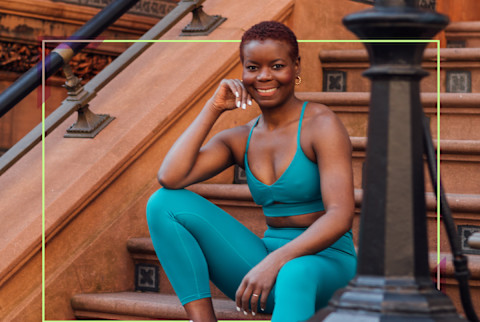How I’ve Learned To Live With A Chronic Illness That Has No Cure

My life used to revolve around my career. I worked 60 to 100 hours a week as a consultant in public accounting. I spent about 10% of my time at home (the rest of the time, I was traveling and living out of a suitcase) and was doing the typical mid-twenties thing of staying out with my friends all night. But eventually, Lupus forced me to re-evaluate my lifestyle in the name of my health and well-being.
Being diagnosed with Lupus
In my early twenties, my doctor told me she suspected I had Lupus. I had some of the markers, and my mom has Lupus, so there was a genetic risk. But I didn’t have any symptoms, and when I went to see a specialist, they said I was fine. It wasn’t until my early thirties that I had my first severe flare. I had a fever, swollen joints, chronic pain and fatigue, and inflammation throughout my body. That’s when I officially got a lupus diagnosis, in 2017.
My situation was pretty typical—on average, it takes seven years to get a Lupus diagnosis—and my diagnosis didn’t come as a surprise. But even having been warned, and having grown up with a mom with Lupus, I wasn't prepared for the life that Lupus would bring.
My mom kept her suffering hidden. I think it was a generational thing. People of her age who have Lupus don't really talk about it; they just got on with life. So I thought I would be able to manage it better than I did.
My first course of treatment was a round of immunosuppressive therapies. (With Lupus, your immune system is overactive and starts to attack your other organs, so immunosuppressives are used to calm the immune system down.) But even being in treatment, I didn’t accept my diagnosis fully. I wasn’t taking my medications as consistently as I should, and even though I knew that sunshine was a trigger for Lupus, I was still taking beach vacations to Miami and Jamaica.
It all caught up to me a year after my diagnosis when I was on a work trip to India. I’d planned to stay there for six months, but after two, my health was deteriorating so quickly that my family flew over and brought me back to the states, where I checked into a hospital for a month.
At that point, I knew it was time to make a change. I wanted to know what else I could do to feel better besides taking medication, so I started researching.
The winding path toward remission
After my experience in India, I started learning about how food can increase or decrease inflammation. I diversified what I ate and began incorporating anti-inflammatory foods that are high in antioxidants.
I learned that movement may also help reduce inflammation,1 and I found that even when I was in pain or had chronic fatigue, if I got up and just stretched or went outside for a walk, that made a difference. I took steps to manage my chronic stress by adopting a mindfulness practice.
And I realized that working a demanding job in the corporate world and facing so many racial disparities was causing me tremendous stress, too. I knew my job wasn’t serving me, and I’d also seen a gap in the marketplace of resources for women of color with chronic diseases.
I started to feel that while Western medicine is helpful and necessary for stabilizing acute conditions, it doesn’t always address root causes or improve quality of life. So I decided to become a Certified Holistic Nutritionist and Autoimmune Nutrition Specialist. I left my consulting job and started working for myself.
After a year of making these changes, my health was in much better shape, and I entered into remission.
Bumps along the road
Of course, healing is never a straight shot. I got COVID-19 in mid-2022, which sent me out of remission and into a life-threatening Lupus flare. From January to April, I endured 12 hospital visits, spending close to two months in the hospital. I lost 45 pounds from being malnourished with gut issues, and there were times when I thought I wouldn’t make it.
Eventually, I regained my physical strength, but my mental health presented another hurdle. What I had gone through was traumatic, and once I was physically safe, that all caught up with me. I had to relearn my body and go back into my toolbox, tapping into my mind, my emotions, and my spirit to help me overcome everything.
In the end, the experience taught me how to advocate for myself. I took time off of work and spent the rest of the year recovering. I learned to go to doctor's appointments prepared with questions so that I could make the best of my limited time slot.
I’ve started sharing my journey on Instagram, and I find that I can now bring a whole new level of empathy, compassion, and understanding to my coaching practice.
What I would tell someone else in my shoes
The sooner you can accept your diagnosis, the sooner you can start the right treatment and therapies. What I find works for me is combining conventional medicine and holistic remedies that ancestors have been practicing for centuries. (It’s true that food is medicine!)
The other advice I would give is to connect with others who have chronic conditions. A lot of the time, dealing with a chronic illness, you feel alone. Your partner or your family just might not understand what you're going through. Since Lupus is considered an invisible disease, you could look fine on the outside but be struggling on the inside. So connect with those who look like you or who are going through what you're going through.
People need to have these kinds of conversations about Lupus because it's not just physical; it’s an emotional disease.
